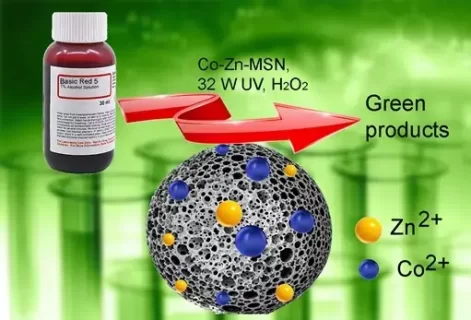Transition-metal modified mesoporous silica nanoparticles as highly effective heterogeneous catalysts for discoloration of Basic red 5 in aqueous solution
Authors
Abstract
Mesoporous silica nanoparticles (MSNs) were synthesized hydrothermally and modified with Co2+ and Zn2+. The as-prepared samples were denoted as MSN, Co-MSN(X), and Zn-MSN(X), where X is the Si/M molar ratio. In addition, co-modified MSN samples with both cations were also prepared and denoted as Co-Zn(Y)-MSN(X), where Y indicates the Zn2+ content in the range of 1-7 wt.% relative to Co2+. Correctness of the anticipated structures was approved by FTIR, XRD, SEM, EDX, BET, and XRF analyses. It was found that Co-Zn(7)-MSN(75) can be used as an efficient photocatalyst for discoloration of basic red 5 under very mild conditions. Up to 86% of basic red 5 was discolored after 3.75 h under the optimized conditions including catalyst dosage of 0.025 mg mL-1, pH=7, and irradiation of 4×8 W UV (254 nm) lamps. By using the Langmuir–Hinshelwood kinetics model, it was found that the reaction followed a pseudo-first-order kinetic.
Highlights
- Mesoporous silica nanoparticles were co-modified with Co2+, and Zn2+.
- The product was denoted as Co-Zn(7)-MSN(75), with Si/Co= 75 and Zn/Co= 7 %.
- Co-Zn(7)-MSN(75) showed high photocatalytic activity in discoloration of neutral red.
- The optimized conditions include pH 7, 0.025 mg of catalyst, 0.5 M H2O2, and 32 W UV.
- 86% of neutral red was discolored under very mild conditions within 225 min.





